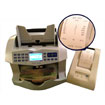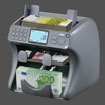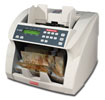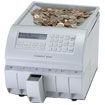Canadian Currency Banknote Myths
A number of myths have circulated regarding Canadian banknotes.
-
An American flag is flying over the Parliament buildings on Canadian paper money. This is not the case. The Birds series bills depict a Union Flag flying over Parliament on the $100; a Canadian Red Ensign (a former Canadian flag) on the $5, $10, and $50; and the modern maple-leaf flag was on the $2 bills. (The $20 depicts the Library of Parliament, with no flag visible.) Those "taken" by the rumour were likely fooled by the bills with the Red Ensign, as the flags are very small and not shown in full colour, and the Ensign with its contrasting canton somewhat resembles the American flag.
-
When a bill depicts a past prime minister, the Parliament buildings behind him are flying whichever flag Canada was using at the time of his tenure. The face of the Birds series featured images of prime ministers (or the Queen) and the houses of Parliament. However, as noted above, the $10 note featured the Red Ensign alongside Sir John A. Macdonald, who became prime minister 25 years before the Red Ensign was approved for use on the Merchant Marine and more than 50 years before it was used on government buildings.[14] Also, the Union Flag is on the $100 with Sir Robert Borden, who came after Laurier who appears with the Red Ensign. This is sometimes explained by the fact that Borden governed during World War I.The views of the Houses of Parliament on the current Canadian Journey series do not feature any flag.
-
The new series $10 bill is being recalled because there is a misprint in the poem In Flanders Fields. The first line as printed, "In Flanders fields the poppies blow," startled many people, who believed the last word should be "grow". John McCrae wrote two versions which were both published, but his original manuscript, the one used by the government and widely used for Remembrance Day ceremonies, reads "blow". (The last two lines are, "We shall not sleep, though poppies grow/In Flanders fields.")







